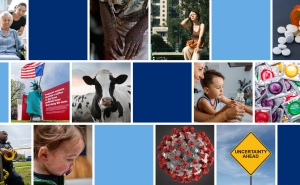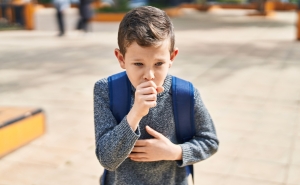Resetting Our Response: Changes Needed in the US Approach to COVID-19
Collective action now could change the course of the next six months.

A Q&A with Caitlin Rivers about the Center for Health Security’s new report.
The US has surpassed 150,000 reported deaths due to COVID-19 and—unlike many other countries—is not on course to get control of this epidemic. Despite an initial decline in cases in May 2020 after stay-at-home orders across the US, cases are resurging in most states. The number of deaths has been rising in many states, with hospitalization rates now matching or exceeding numbers seen at the peak of the epidemic in New York City in March and April. The resurgence is stressing many sectors of society from businesses to education to health care.
It’s time to reset.
In a new report, “Resetting Our Response: Changes needed in the U.S. approach to COVID-19,” researchers from the Johns Hopkins Center for Health Security outline 10 recommendations to stem the rise of COVID-19. According to the report, the COVID-19 pandemic is a challenge far beyond what any city, state, territory, or community can handle alone. The authors call for collective action to gain control of this epidemic, avoid cascading crises in the health care system and economy—and save lives.
Caitlin Rivers, MD, MPH, a senior scholar at the Center for Health Security, breaks down some of the report’s key points in this Q&A.
Who should use this resource?
This report is intended to guide federal, state, and local leaders in charting a new course to get control of the pandemic. We also have recommended actions for Congress and the nation’s research institutions. I think it’s also useful for the public to understand what more we could be doing to turn the corner.
What are the key recommendations in the report?
- Encourage and, when appropriate, mandate nonpharmaceutical interventions, including wearing masks and physical distancing.
- Postpone/close higher-risk activities and settings in jurisdictions where the epidemic is worsening; reinstitute stay-at-home orders for up to two weeks in jurisdictions where health care systems are in crisis.
- Bolster PPE supply chains and stockpiles, and make information about the PPE manufacturing base and supply chain publicly available, with the goal of transparency around this paucity and expanding PPE availability as much as possible.
- Bolster test supply chains, plan for shortages, and collaborate with states and commercial laboratories to expand capacity and improve test turnaround times.
- Conduct and make public detailed analyses of epidemiologic data collected during case investigations and contact tracing.
- Curate and fund a rapid research agenda to cope with major challenges that have arisen.
- Scale up contact tracing programs and continue to improve participation and performance.
- Identify and disseminate best practices for improving the public health response.
- Plan for an eventual national vaccine, including production, allocation, distribution, and community engagement, to ensure a successful rollout.
- Develop policies and best practices to better protect group institutions.
What are some potential barriers to adoption of these recommendations?
Many of our recommendations ask the federal government to take a more central role than they have played to date. This crisis is an “all hands on deck” situation, so we need to bring to bear all of the expertise and resources that we can muster.
Also, although our recommendations are straightforward, we know that none of them are easy. They will take concerted, coordinated effort from all leaders and stakeholders.
What might the next six months look like if the US cannot get the epidemic under control? Will we all have to return to the kinds of lockdowns we saw in March and April?
Outbreaks must be actively managed. If we cannot get the epidemic under control, we will continue to see the tragic losses and disruptions that we have endured over these past months.
Communities that move early to close high-risk settings and activities; promote physical distancing, mask use, and hand hygiene; and scale up testing and contact tracing should be able to avoid lockdowns.
What can individuals do?
Unfortunately, the virus is still circulating in our communities. We need to continue to be vigilant about the protective actions we have all come to know this spring and summer—physical distancing, masks, hand hygiene, avoiding crowds, and staying at home when possible. The fewer opportunities we can give the virus to spread, the better.
What else needs to be done to address populations at highest risk of severe effects of COVID-19?
We know that crowded settings like nursing homes, institutions of incarceration, and manufacturing facilities are at high risk of outbreaks. Those settings would benefit from medical-grade masks and easy, frequent access to testing.
For older adults and people with underlying health conditions who are at higher risk of severe illness, it’s especially important that they continue to limit time spent in public, particularly indoors. And of course, since we are all connected, everyone can do their part to protect the most vulnerable by doing the same.
If all of these measures are adopted, how long would it take to get the outbreak under control and relax some social distancing measures?
It takes longer to go down the epidemic curve than it does to go up, so we must be prepared for a long fight. But if we double down and put in place these measures, we would be in a better place by fall.





